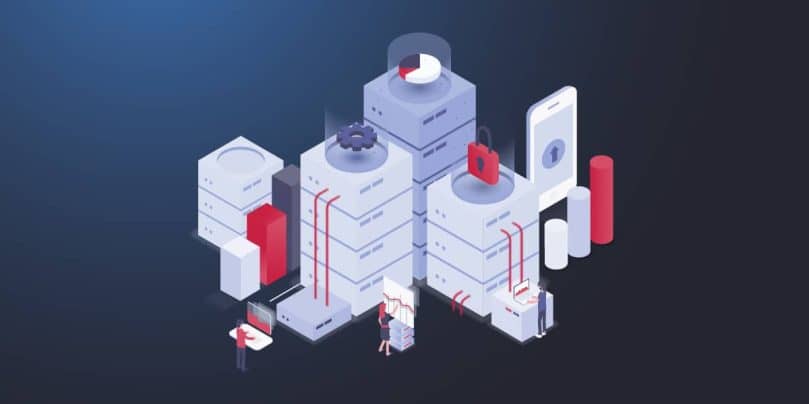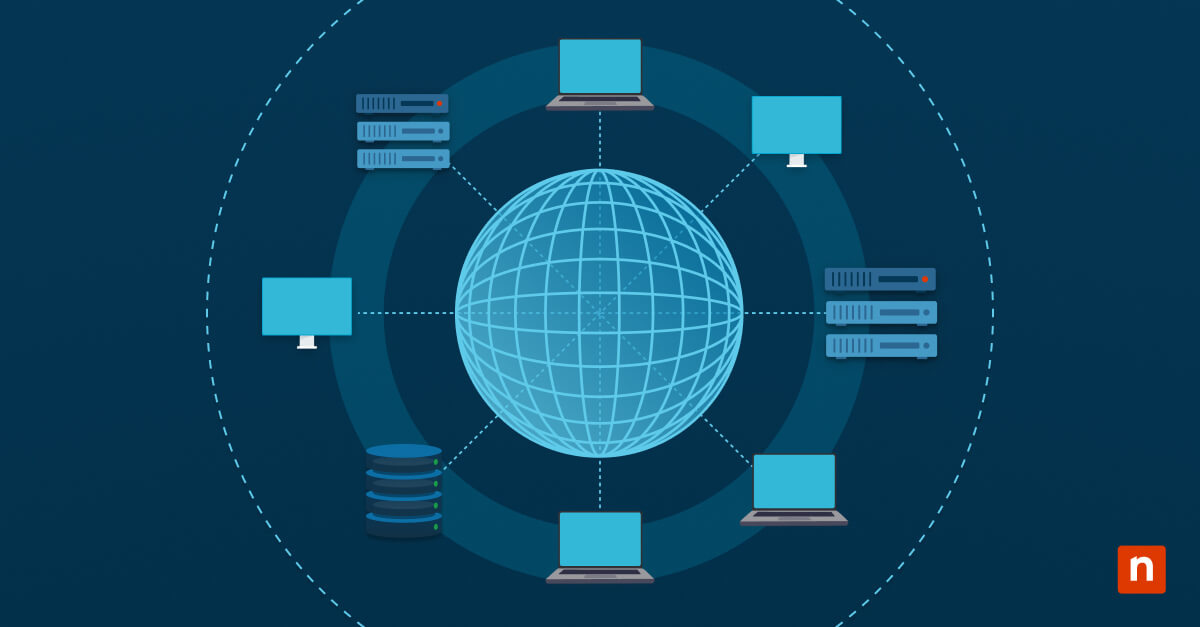Organizations are continually increasing the number of devices and technologies used within their IT environments. To ensure these IT environments are functioning well and providing users a good experience, a company’s IT infrastructure must be tracked and maintained. This is accomplished through the use of infrastructure monitoring.
What is infrastructure monitoring?
Infrastructure monitoring is a process used by businesses that allow them to gather and analyze data on components in the infrastructure that affect the performance of their IT systems. An IT infrastructure consists of servers, networks, and other elements running in the background that people rely on. The data, collected through infrastructure monitoring software, allows IT organizations to easily view and identify potential problem areas so that systems and applications can remain in full service.
How does IT infrastructure monitoring work?
IT infrastructure monitoring works by continuously tracking and collecting information on IT components such as servers and networks, assembling the gathered information, and alerting you when a component’s health is poor or it is not functioning well. IT infrastructure monitoring is accomplished through the use of specialized software tools that collect and analyze the data on an IT infrastructure’s various components.
2 types of infrastructure monitoring
At its most basic level, infrastructure monitoring is completed through two different methods: agentless or agent-based.
1) Agentless
Agentless solutions don’t require an agent to be installed on devices in your IT environment. Monitoring is performed remotely with the agent being placed on a server or probe, so data is collected quickly and easily. An agentless monitoring solution monitors SNMP (Simple Network Management Protocol) devices from the probe or server by reaching out to the SNMP devices and monitoring over the network.
2) Agent-based
With agent-based infrastructure monitoring, agents are installed on devices in your IT infrastructure. These devices typically consist of Windows, Mac, Linux, Hyper V, or VMWare operating systems. Doing this allows each device to be effectively monitored and data points are easily gathered from the installed agents.
Important data sources for infrastructure monitoring
Since infrastructure monitoring entails collecting data on and monitoring important aspects of your IT environment, it’s important to know what components this data should be collected from. A few important data sources for infrastructure monitoring include:
Hardware
Hardware, or endpoints, makes up the tangible part of an IT infrastructure. It includes physical devices such as computers, disk drives, phones, and tablets. Endpoint monitoring ensures that your devices perform optimally and it also provides support for key IT functions.
Network
The network has various components to monitor such as the router, hub, and modem. Observing these important parts enables you to proactively resolve issues within the network that arise. By monitoring the network and quickly solving problems that are detected, it allows your devices to seamlessly connect with each other in your IT environment.
Server
Server monitoring is tracking and collecting data about the health and performance of your server. This data may include system metrics on CPU and RAM usage, as well as overall disk space. Monitoring your server helps to ensure that it is properly functioning.
Application
Applications consist of software configured to perform particular IT functions. Application monitoring provides useful data for you to make changes that will reduce downtime, increase productivity, and improve end-user experience.
Infrastructure monitoring best practices
Use a designated infrastructure monitoring tool
Infrastructure monitoring is best carried out using a tool or software specifically designed for that purpose. As you gather relevant data, the infrastructure monitoring tool will have the best options and settings to choose from. It also consolidates and analyzes the gathered data so you can easily view and determine any changes that need to be made.
Consistently review collected metrics
Data from infrastructure monitoring is the most beneficial when it is viewed on a regular basis. If you are keeping tabs on small changes that may occur in your IT environment, then when issues pop up it will come as less of a surprise. It empowers you to be prepared and to take action when necessary.
Set and prioritize notifications
Make good use of the alert capabilities in infrastructure monitoring software to minimize risks within your IT infrastructure. Create expected ranges for your metrics, then set notifications for if/when a certain component is outside of an expected range. This leads to checking the particular component and trying to determine what possibly caused the change. If possible, prioritize notifications in order of importance in case two notifications occur at the same time.
Create a response strategy for when risks are identified
When a metric falls outside an expected range and a risk has been identified, don’t overreact. Make a general plan for how you’ll respond when any risk is recognized. Then, decide what actions to take for particular areas of your IT environment. An identified risk on a server requires a different sort of response than malfunctioning hardware, for example.
Benefits of infrastructure monitoring
Real-time alerts
Instead of having to manually discover an issue later, it can notify you as soon as a metric falls out of the expected range, thus providing you with real-time information.
Early discovery of issues
Infrastructure monitoring continuously tracks a variety of data sources in your IT environment. Quickly get to the root cause of problems in your IT environment by viewing the data to see when changes first occur.
Better infrastructure performance
Collecting data on the health and performance of the infrastructure gives you specific information on what areas can improve, so you know what actions to take to improve overall performance. You can also view historical data on your system and perform a comprehensive performance analysis to give you detailed information on past performance.
Increased reliability
Infrastructure monitoring gives you the information needed to ensure it continues to run smoothly. This helps you know how to continually improve the IT infrastructure and increase overall reliability.
Automated tools
The use of automated tools is like having a team work 24/7 to recognize risks in your IT system. You can take human error out of the equation and depend on automated technology to ensure your IT infrastructure works optimally.
What to look for in an infrastructure monitoring solution
With so many infrastructure monitoring solutions available, it can be difficult to know what to look for in a solution and know what will work for you. Infrastructure monitoring should be easy and intuitive to use, so you spend less time figuring out how to use it and more time actually monitoring the data sources.
It should also monitor key components of your IT infrastructure, provide the ability to set alerts and notifications, and use automation. A very important aspect of a dependable solution is its ability to aggregate and analyze the data so you can easily glance at it and know what needs to be fixed or resolved.
Monitor your IT Infrastructure with NinjaOne
Infrastructure monitoring is a crucial tool used to maintain functional IT environments. Without it, many metric changes go undetected and can lead to bigger issues, which affect both end users and the infrastructure as a whole. Infrastructure monitoring software gives you the tools you need to keep track of and maintain your IT environment’s components.
NinjaOne provides various infrastructure monitoring tools such as endpoint monitoring, network monitoring, and server monitoring as part of their Unified IT Management (UITO). The data is assembled and analyzed in a single-pane dashboard for easy viewing. With NinjaOne, you can also set alerts and receive real-time notifications so you can quickly take action. Sign up for a free trial today.








